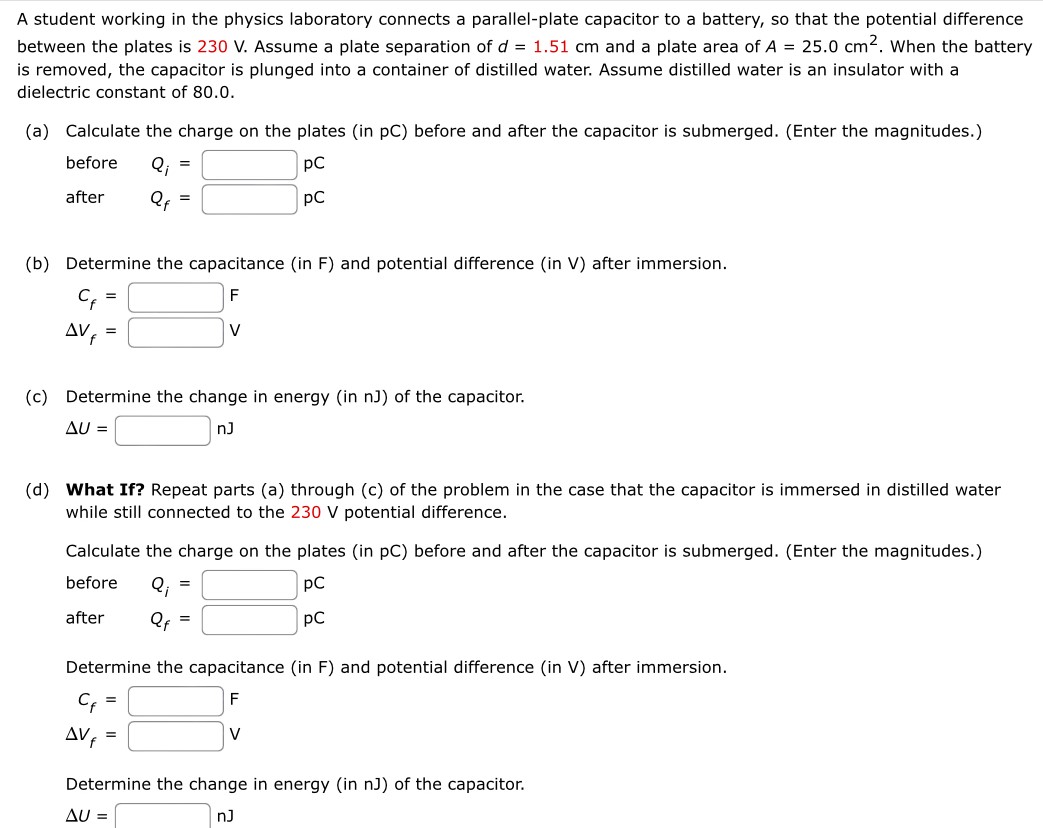A student working in the physics laboratory connects a parallel-plate capacitor to a battery, so that the potential difference between the plates is 230 V. Assume a plate separation of d = 1.51 cm and a plate area of A = 25.0 cm2. When the battery is removed, the capacitor is plunged into a container of distilled water. Assume distilled water is an insulator with a dielectric constant of 80.0. (a) Calculate the charge on the plates (in pC) before and after the capacitor is submerged. (Enter the magnitudes.) before Qi = pC after Qf = pC (b) Determine the capacitance (in F) and potential difference (in V ) after immersion. Cf = F ΔVf = V (c) Determine the change in energy (in nJ ) of the capacitor. ΔU = nJ (d) What If? Repeat parts (a) through (c) of the problem in the case that the capacitor is immersed in distilled water while still connected to the 230 V potential difference. Calculate the charge on the plates (in pC) before and after the capacitor is submerged. (Enter the magnitudes. ) before Qi = pC after Qf = pC Determine the capacitance (in F) and potential difference (in V ) after immersion. Cf = F ΔVf = V Determine the change in energy (in nJ) of the capacitor. ΔU = nJ
